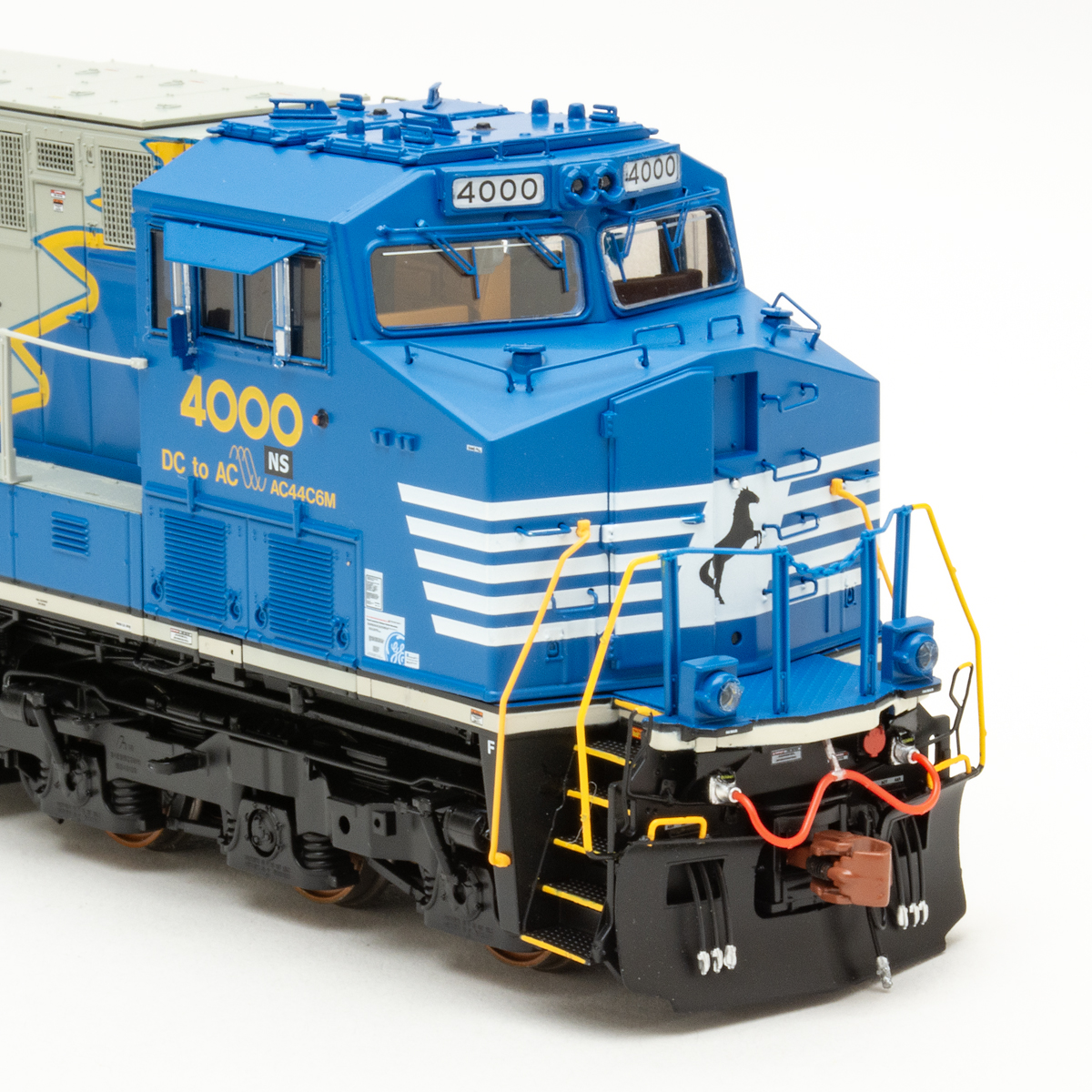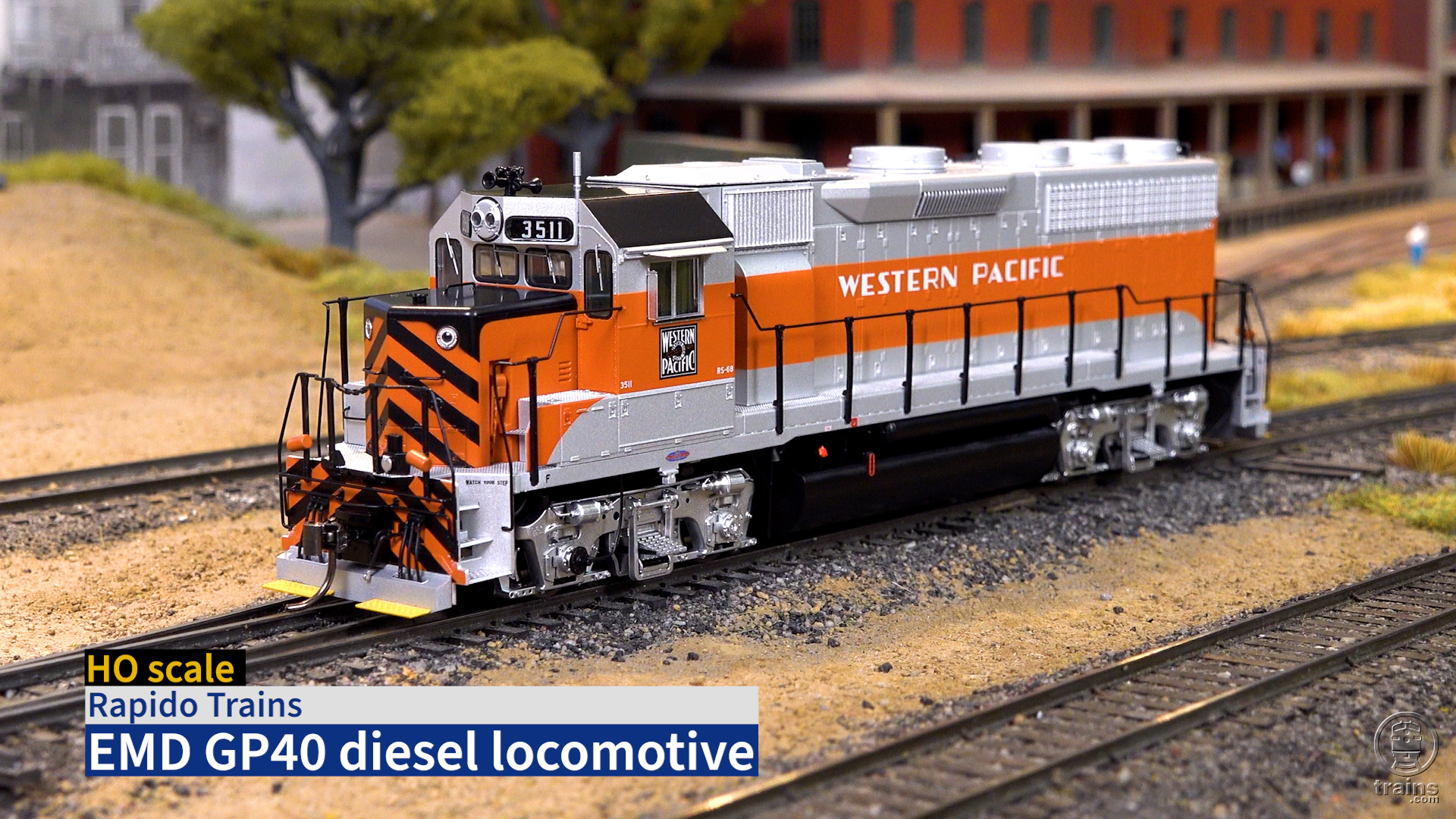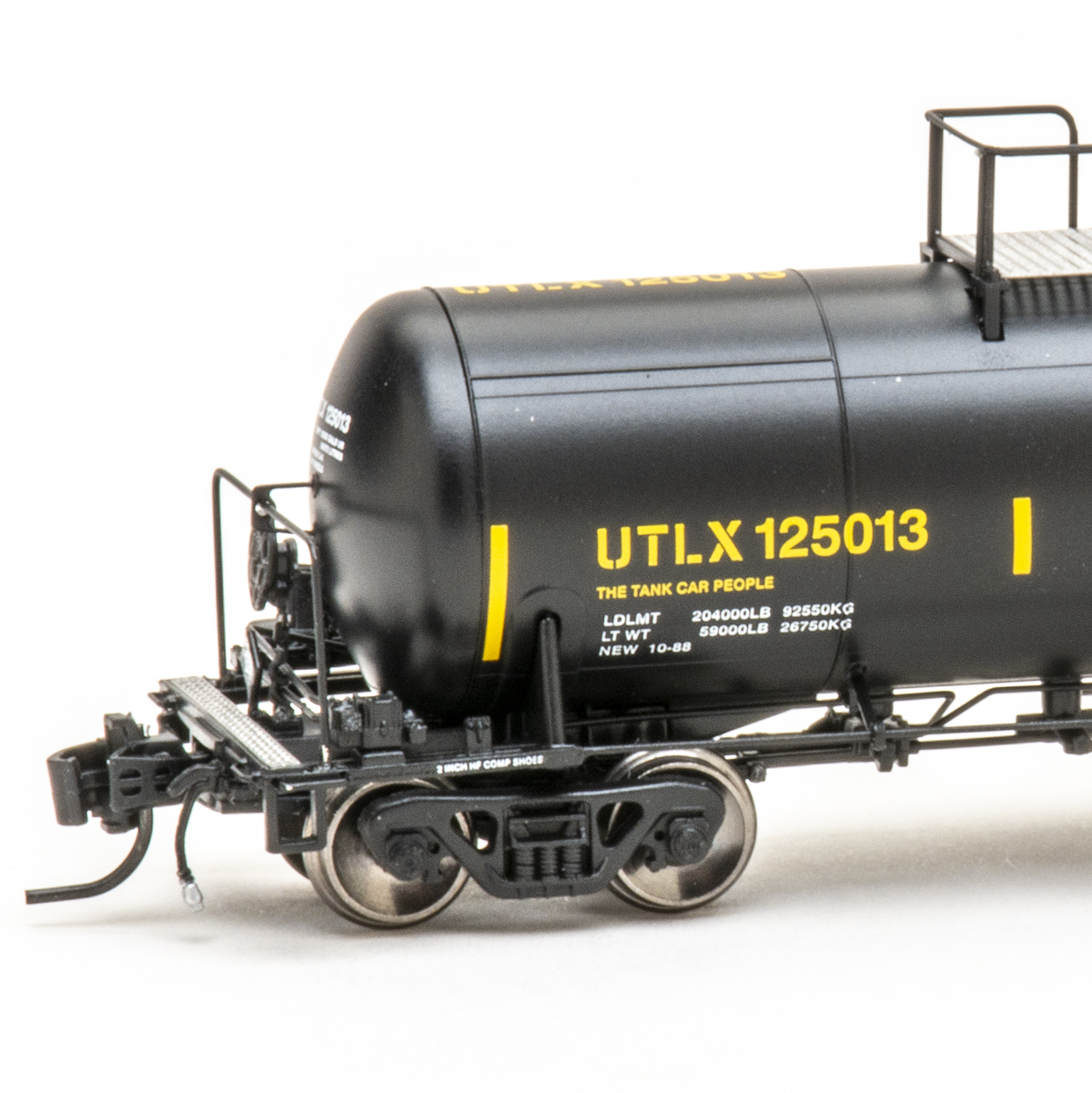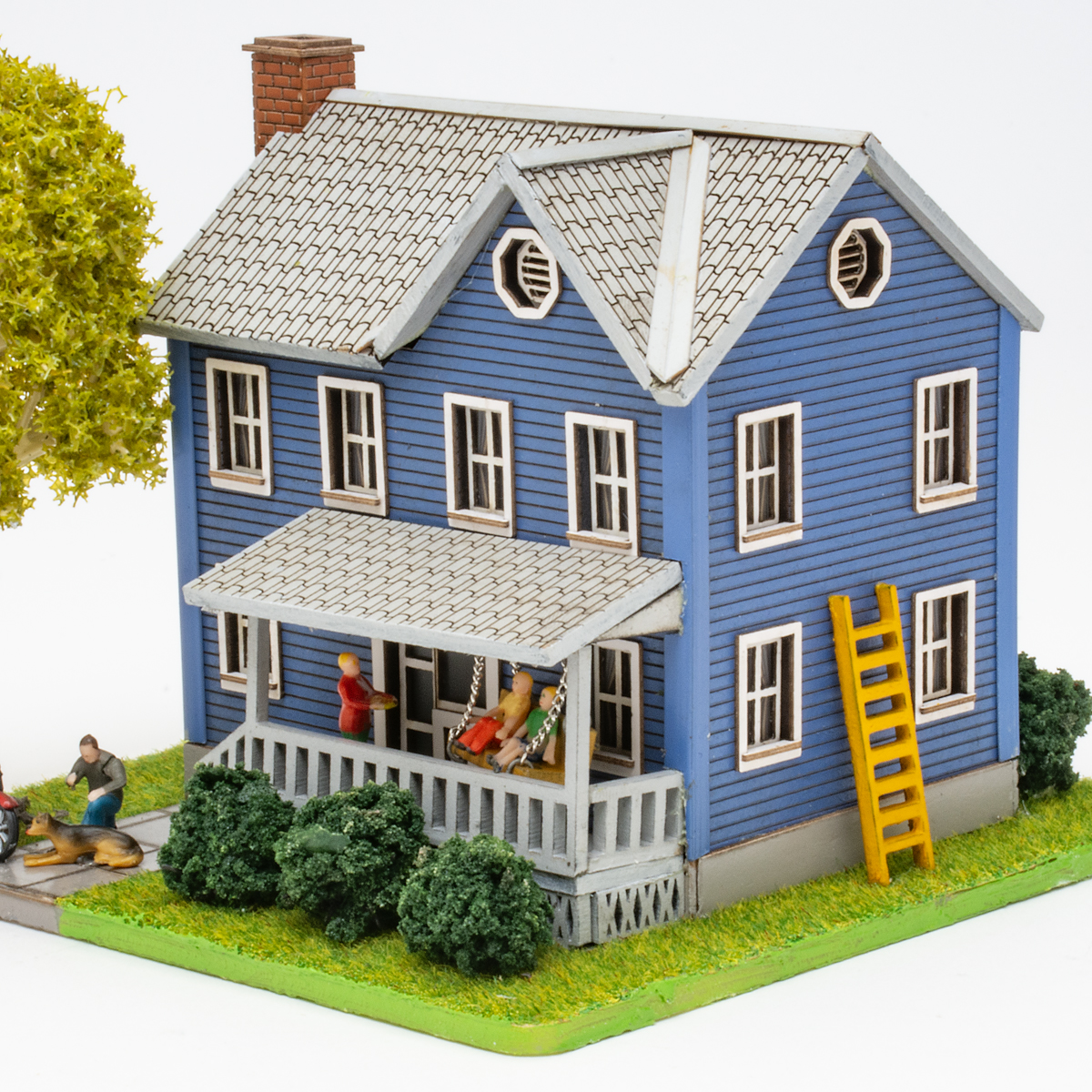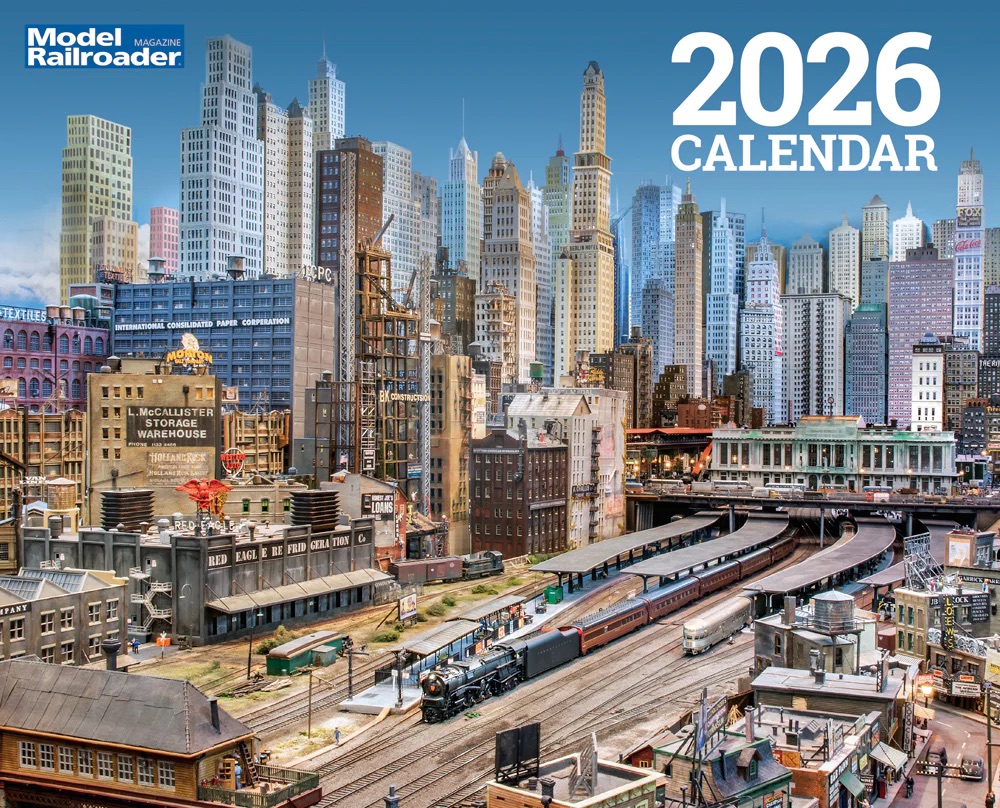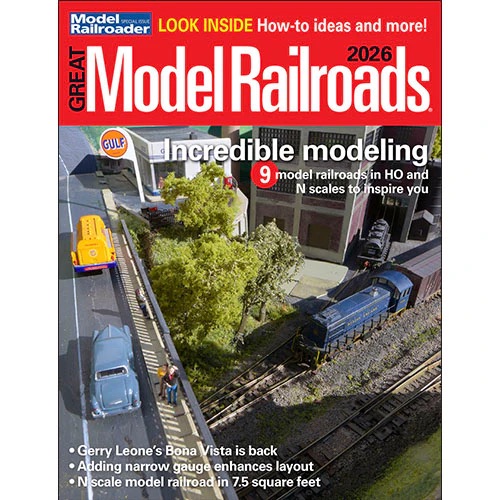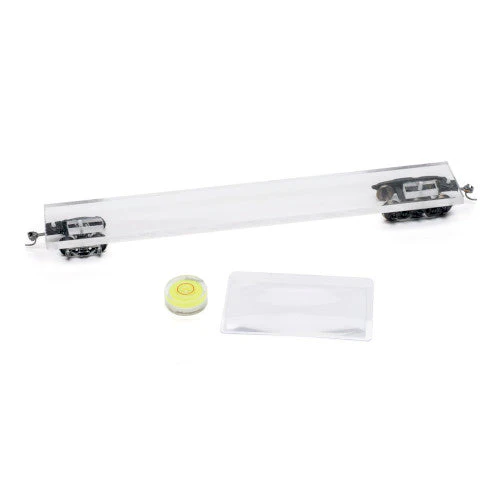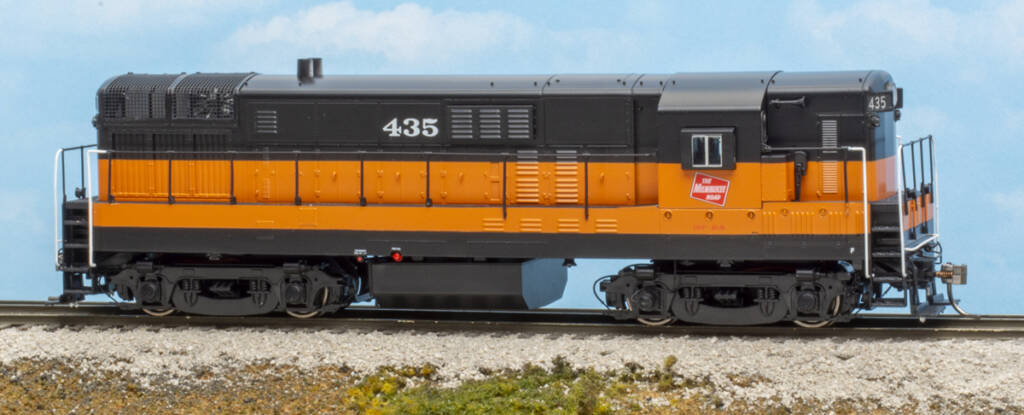
A Fairbanks-Morse H16-44 diesel locomotive, based on a Phase III prototype, is now available from Rapido Trains. The HO scale model features injection-molded plastic and die-cast metal construction, prototype-specific details, and body-mounted Macdonald-Cartier metal couplers.
Prototype history
Fairbanks-Morse, and its Canadian subsidiary Canadian Locomotive Co., produced the H16-44 from April 1950 until March 1963. During the course of the production, 299 units were built for railroads in the United States, Canada, and Mexico. Of the road switchers offered by the Beloit, Wisconsin-based builder, the H16-44 was the most popular.
The sample we received is decorated as Milwaukee Road 435, part of the railroad’s 400 through 436 series. The four-axle road switcher was built in January 1956 as Milwaukee Road 2515. The unit, part of the 16F-RS class (1,600 horsepower, Fairbanks-Morse, Road Switcher), was renumbered 435 in 1959. The H16-44 was retired in April 1976 and scrapped on May 14, 1976 at the railroad’s shops in Milwaukee, Wis.
Spotting features on Phase III locomotives include C-Liner trucks with a curved-bottom drop equalizer, straight walkways, and a smaller radiator section. Of 37 H16-44 diesels the Milwaukee Road rostered, eight (429 through 436) were Phase III models.
Model features
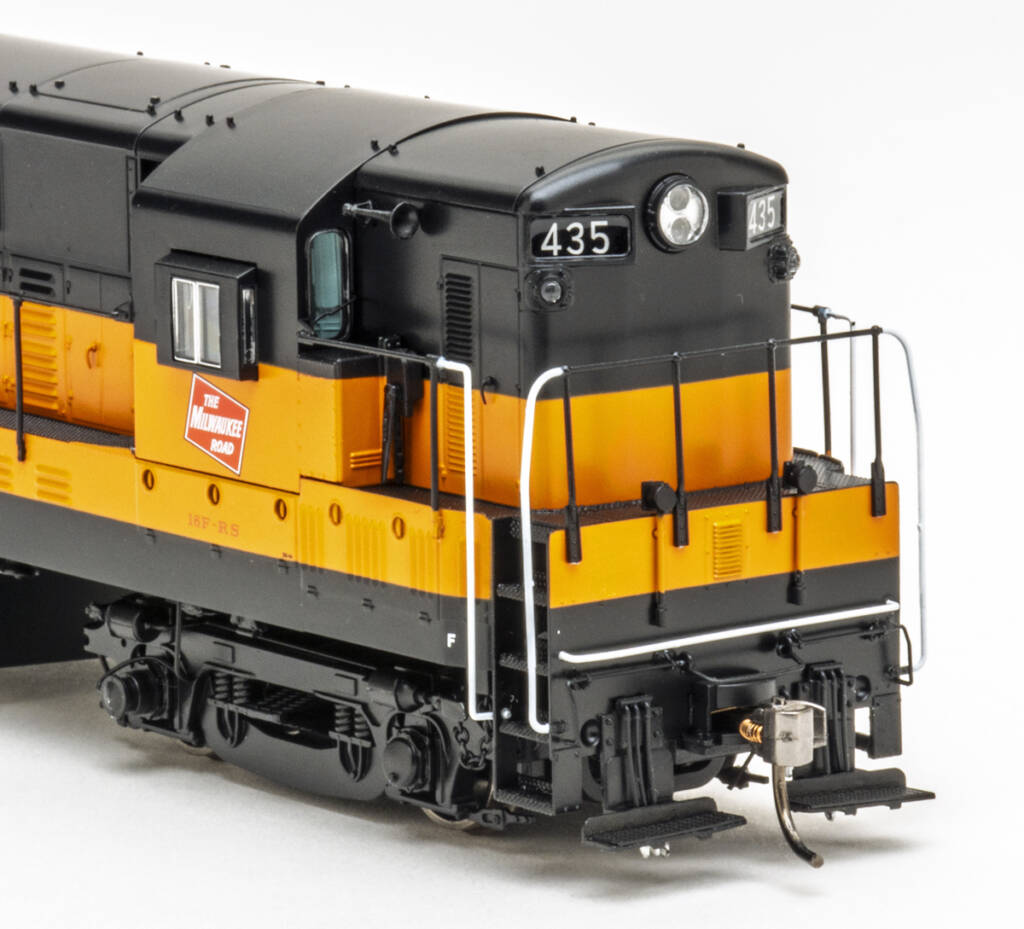
The Rapido H16-44 has many separate, factory-applied parts. Details on the front and rear pilots include m.u. and train line hoses, footboard pilot handrails, uncoupling levers, and m.u. receptacles. A ratchet-style handbrake is located in front of the cab on the engineer’s side.
The model is complemented by see-through, etched-metal parts, including the footboards, steps, and radiator fan screens. The blades for the radiator fans are visible through the screens. Nice touch!
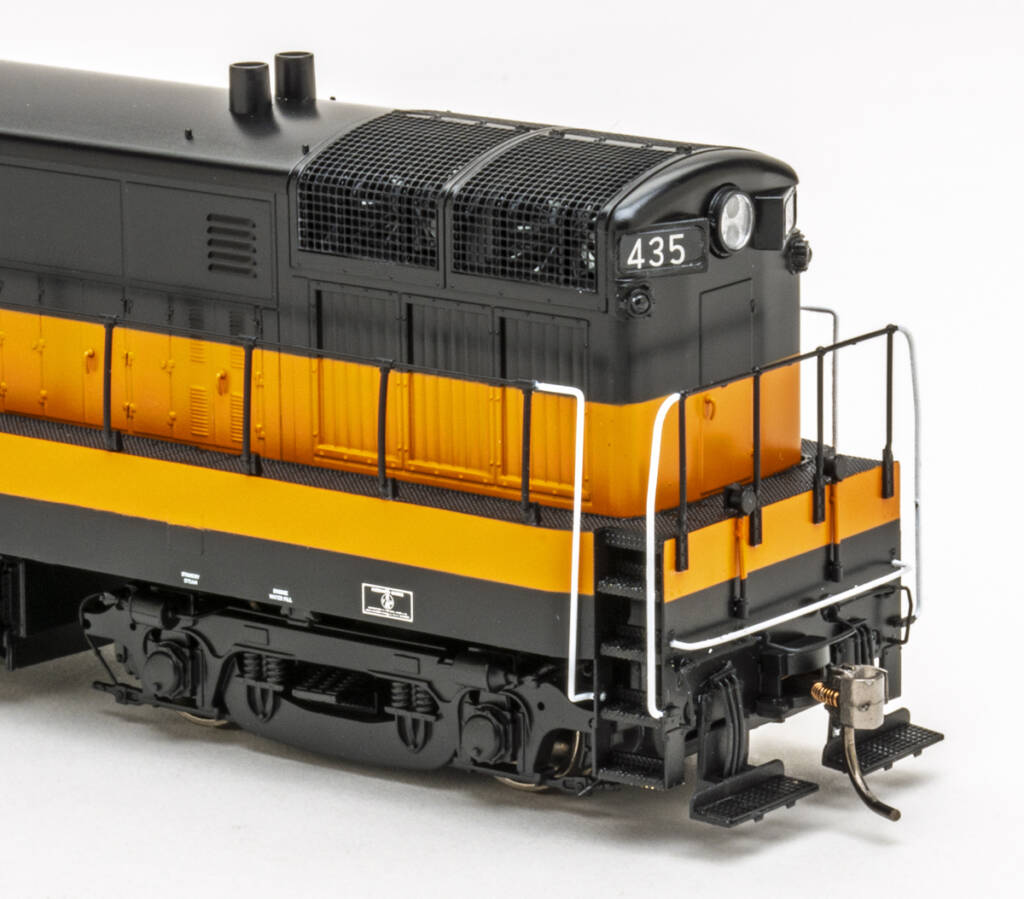
Additional details on the Milwaukee Road unit include wind deflectors on the fireman’s side of the cab and an all-weather window on the engineer’s side. Modeler-installed Automatic Car Identification plates and an extra all-weather window are included.
Speaking of the cab, it has a detailed interior with three seats. There’s plenty of room to add crew figures. Directions for removing the shell and cab floor can be found on pages 6 and 7 of the manual included with the model.
The plastic C-Liner trucks have factory-applied brake cylinders and sand lines. The front truck on the engineer’s side includes a speed recorder and metal chain running from the forward brake cylinder to the chain guide.
Measuring up
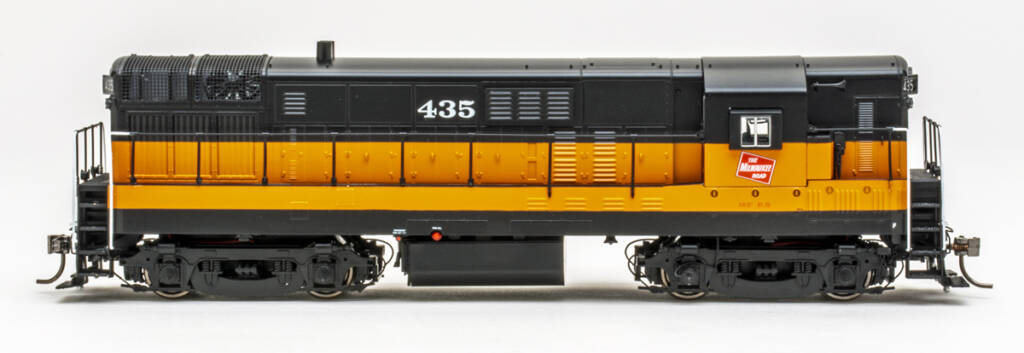
Our review sample is neatly painted in Milwaukee Road’s orange-and-black scheme. The herald and lettering placement matches prototype images of the 435 that I found online. The road numbers on the long hood look a whisker oversize, but hardly what I’d consider a deal breaker. The bottoms of the stanchions that extend into the orange should be painted to match.
Prototype drawings of the H16-44 were published in the 1956 Locomotive Cyclopedia of American Practice (Simmons-Boardman Publishing Corp.) The Rapido model matches all printed dimensions.
The sample we received has an ESU LokSound V5 sound decoder. For workbench testing, I used an NCE Power Cab. At step 2, the four-axle road switcher crawled along at less than 2 scale mph. The H16-44 achieved a top speed of 72 smph at step 28. The maximum speed range on the prototype units ranged from 66 to 79 mph depending on the gear ratio.
I then took the Milwaukee Road unit over to our Winston-Salem Southbound layout. The locomotive did a nice job switching cars on the Tar Branch, navigating the No. 4 turnout and 30-degree crossing with no problems. With a drawbar pull of 3.8 ounces, the H16-44 should be able to pull 53 free-rolling freight cars on straight and level track.
Rapido has done a great job capturing the lines of the Fairbanks-Morse H16-44. The sounds of the single-chime air horn and the rumble of the eight cylinder, opposed-piston diesel engine are the icing on the cake.
Watch a video of the Rapido Trains HO FM H16-44 in action on Trains.com.
Facts & features
Price: Direct-current model, $225; with ESU LokSound V5 decoder, $335
Manufacturer
Rapido Trains Inc.
382 High St.
Buffalo, NY 14204
rapidotrains.com
Era: 1959 to 1976 (as decorated)
Road names: Milwaukee Road; Baltimore & Ohio; Canadian National (green and yellow and “wet noodle” schemes); Canadian Pacific (maroon and gray with block lettering and Action Red schemes); New York, New Haven & Hartford (McGinnis and Alpert schemes); Norfolk & Western (blue); and Virginian Ry. One to four numbers per scheme.
Features
- Body-mounted Macdonald-Cartier couplers, at correct height
- Metal wheel stubs on plastic drive axle gears, correctly gauged
- Minimum radius, 18”
- Weight: 14.6 ounces






